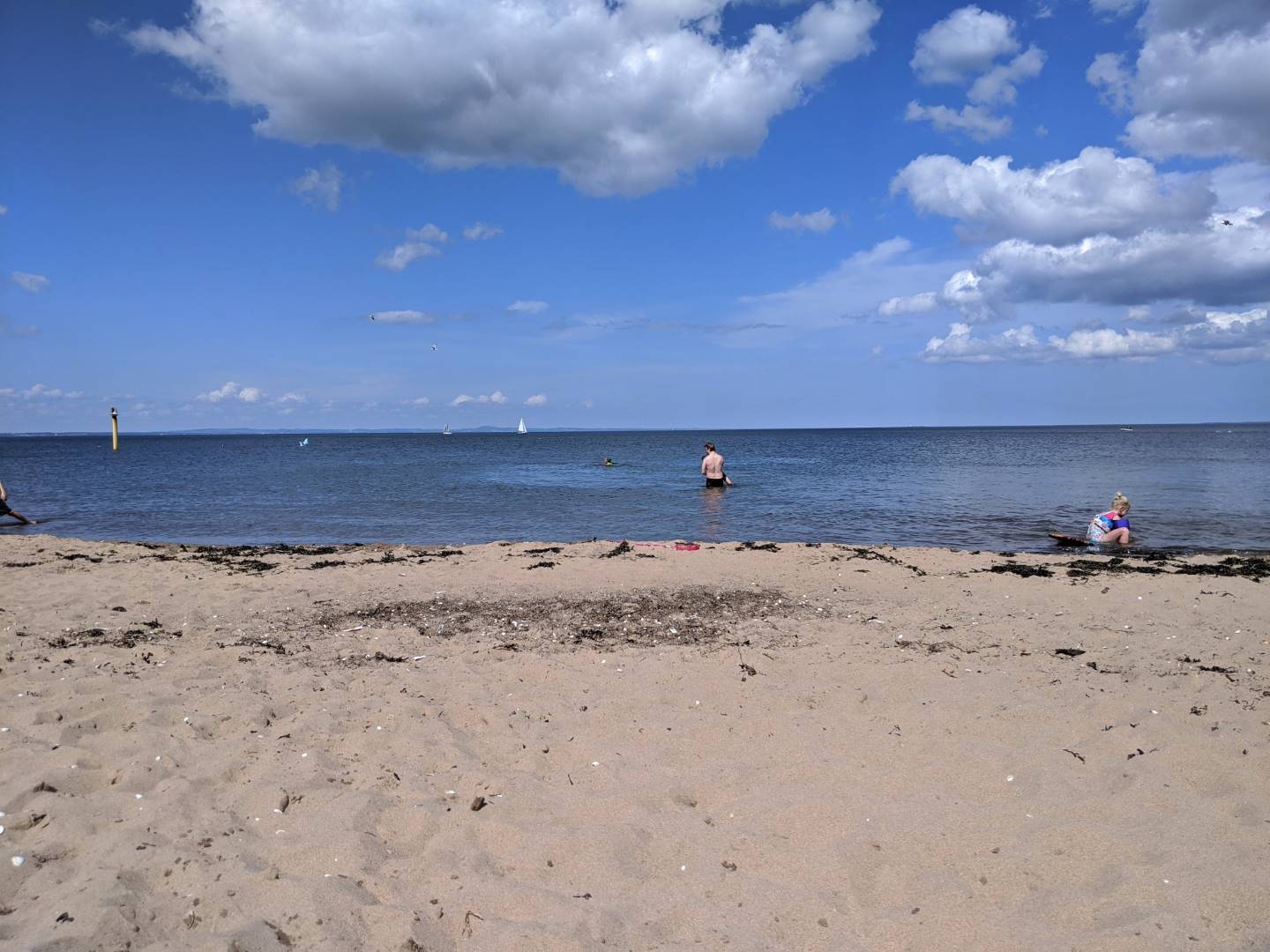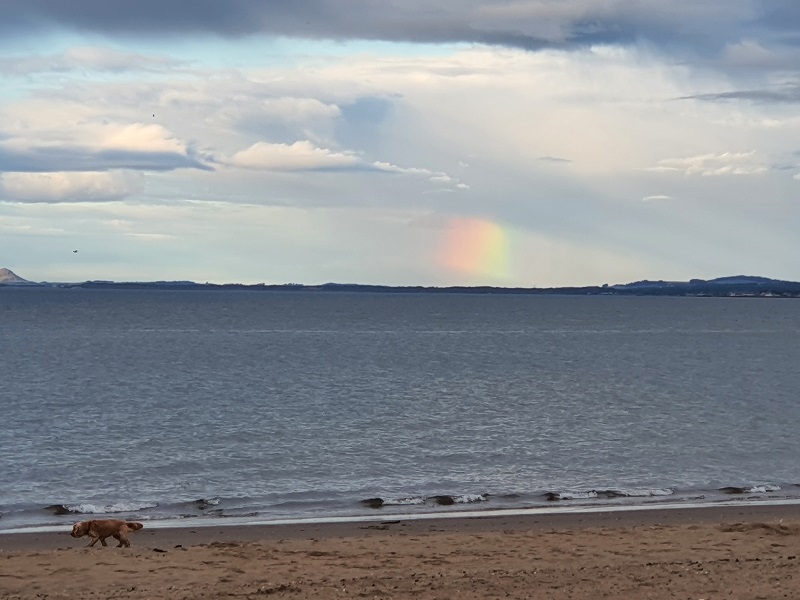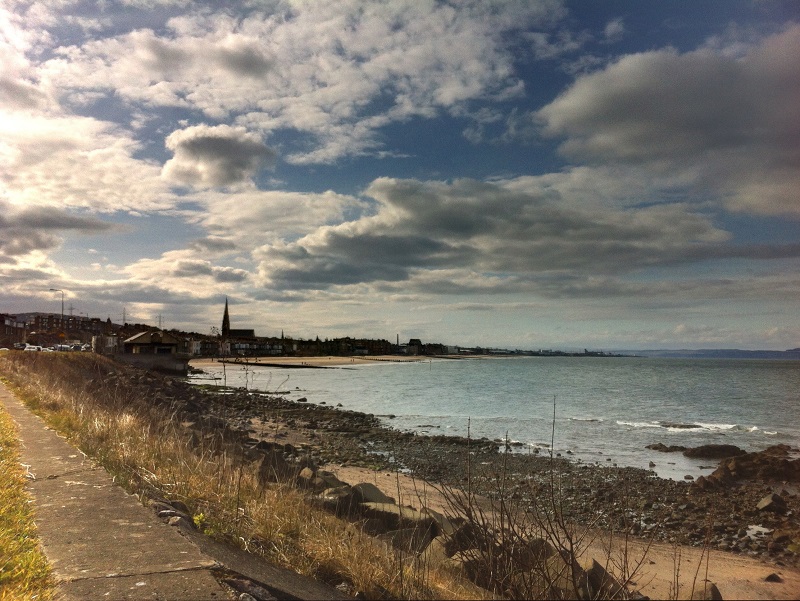Portobello beach
Portobello beach
This sandy beach next to Edinburgh, features a picturesque promenade with shops, cafes, restaurants and more, with views across the Firth of Forth. Scroll down to take a tour.

#LuckytoLiveHere



























Thank you to everyone who sent in images for the online gallery above for everyone to enjoy.
Let's celebrate Portobello beach!
Know your beach
Beaches and all natural spaces are a vital life-line, offering us somewhere to be, with views and fresh air. There is more to the sand and sea here than immediately meets the eye. Whether you're a lucky local or dreaming of a visit, we invite you to take a tour of Portobello beach.
Environment & place
Portobello is a designated bathing water. Bathing waters are designated where a large number of people are expected to bathe and a permanent bathing prohibition, or permanent advice against bathing, is not in place. Water quality here is monitored during the bathing season by SEPA, with daily forecasts published on their website.
SEPA and Scottish Water are always working to improve water quality. To find out more, view the Portobello bathing water profile here.
Beach length: 1.4 km (Portobello Central)
Tidal zone: 20-310 meters from the water's edge
Average rainfall: 296 mm (compared to 311mm average for Scotland)
Main tributaries: Braid (Figgate) Burn
Catchment area: 32 km2
Beach Manager: City of Edinburgh Council
Community information: There are a number of local community groups that work to care for the beach and surrounding area, including Friends of Porty Prom and Keep Porty Tidy.
Stay safe at the beach with this advice from RNLI.
Wildlife & landscape
Beaches are great place for us to spend time outdoors, whether walking, pic-nicing, swimming or playing. But have you ever stopped to think who else calls this beach and these waters home?
A haven for shorebirds
Portobello beach is part of the Firth of Forth Special Protection Area, meaning it contains important biodiversity, particularly birds.
The in and out of tides on beaches like Portobello attracts a variety of water birds, who feed on the small creatures left exposed in shallow waters, sand flats and mud flats when the tides go out.
Oystercatchers
You’ll likely hear them before you see them -hence their Scots name ‘pleep’.
Spot these distinctive black and white shore birds foraging mussels or rooting around for critters in the sand at low tide, using their long red beaks.
Mussels
Their long blue-black shells, often with a pearly interior, are a common find on Portobello beach. They can be found living on intertidal rocks and piers in the area.
Mussels live their lives attached to hard surfaces where the water line goes up and down with the tide. They tend to live in clusters, which helps them hold on against the waves. They can ‘walk’ to adjust their position and when out of the water, they close up tight to avoid drying up. They range greatly in size and will generally grow bigger in deeper water.
'Seaweed'
Seaweed is commonly washed up on the shores of Portobello. If you look closely, you’ll notice many different kinds.
Bladder wrack is a common find here, recogniseable by its air-filled ‘bladders’, that help it float upwards towards the light. Bladder wracks live in intertidal waters and are themselves a habitat for small worms and snails.
History & Heritage
The waters of the Firth of Forth have lapped the Portobello shoreline throughout the ages. Have you ever considered what has changed over the years and what else could change in the future?
Bathing Pools
The Portobello Open Air Bathing Pool featured the first wave machine in Scotland, with waves reaching 3 ft high. It was closed and camouflaged for six years during Work War 2 and, after a final season in 1979, it was demolished in 1988.
The indoor bathing pool, built in 1898, still stands on the prom today, retaining many of the original architectural features including one of only 3 remaining Turkish Baths in Scotland.
Pottery & The Kilns
The Bottle Kilns are the last remaining buildings of the pottery industry in Scotland. Built at the turn of the century on the site of what used to be the old harbour, they were used to fire pottery skillfully crafted by Buchan Pottery potters until 1972, when the business relocated. They are called 'Bottle Kilns' because of their bottle-like shape.
Coade Pillars
A distinctive feature of the community garden half-way along the promenade, these ornate pillars, created in the early 1800s may originally have been intended as chimneys.
They were restored and erected in the garden in 2008. They are made from coade, a soft artificial stone that can be moulded rather than carved.

